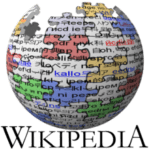The Chinese language is one of the ancient languages. More than 1.3 billion people around the globe speak this language. The main family comes from the Sino-Tibetan language. The Chinese language has many dialects and many people consider these as separate languages. The lack of mutual intelligibility is there among these variants. A significant amount of the world’s total population speaks Chinese. It is one of the United Nations’ official languages and also the most spoken in the world. The Chinese language has come a long way and its history goes beyond centuries. It does not have any defined alphabet and rather works with pinyin. This is a tonal language and a complex one. The new learners and many speakers of modern language also find this language complex to nail.
The Chinese language belongs to the world’s most promising economy, China. So, English to Chinese and Chinese to English translation services are evident for Western businesses to expand in China and vice versa. The translation process is crucial and can have multiple purposes. People not only seek translation for business, but studies, research, and many collaborations also demand to bridge the language gap. Chinese is an ancient language and complex as well. There are hundreds of Chinese characters and as experts state around 3500 Chinese characters are a must to get basic proficiency in the Chinese language. However, with the ancient Chinese, there are around 7-10 Chinese language groups entailing the details of the different variants of the Chinese language. Many people consider these as dialects and others name them as language types.
However, in order to translate to and from the Chinese language it is imperative to understand the basic differences between Mandarin Chinese and its standard variant. This can also clear the doubts and ambiguities of the people who get to stumble between both variants. The traditional and modern Chinese languages are though mutually intelligible but these have key differences that affect different factors. The translation process is also affected by both. Chinese to English translation services as well as translations in other languages can only be carried out with the right contextual knowledge of each variant and dialect of the Chinese language being used.
Differences in characters
One of the prominent differences between both variants is the characters.
Number of characters
The number of characters varies in both variants. Traditional Chinese deals with a larger and broader character set. They have strokes and add complexity to the content. Modern Chinese however is a simplified version of the Chinese language. It adopts the simplified set with fewer characters. They focus on practicality mainly.
Appearance
The traditional characters have a complex intricate form. These have a mingled appearance. These get tough to comprehend and understand, especially for a new learner. However, when it comes to the simplified version the set has fewer characters. Their prime focus is practicality.
Usage
The usage of the Chinese characters is also different for both versions. Traditional Chinese translation services demand native speakers to understand the language nuances and dialects accordingly. This is also the written standard in Taiwan, Hong Kong and Macau. Also, modern Chinese is dominated in areas such as mainland Chinese and Singapore.
Vocabulary differences
The second class of differences comes in terms of vocabulary which is an important aspect.
Formal vs. informal
Traditional Chinese uses a rather formal register. A more proper and formal tone is followed in the formal version. This has great influence from classical literature. However, there are more colloquialisms in the modern Chinese language. It embraces colloquialisms and also reflects the everyday language that people speak in China more conveniently.
New words and terminology
Modern Chinese is naturally open to embracing new words and terminology. Some new terms and words have been incorporated into this language. There are innovations and also modern concepts and people are quite open to accepting these all. The traditional Chinese however on the contrary seek great pride in the traditional approach and mostly rely on classical expressions.
Grammar and Syntax
Grammar and syntax are also an inseparable part of a language. The grammar and syntax of traditional Chinese are quite complicated as compared to simplified Chinese.
Sentence structure
The sentence structure is not much different from each other. Both retain a similar sentence structure. However, modern Chinese is more open and adaptable. Speaking a loose sentence construction is accessible. The grammar rules are not much followed and the omission of certain grammatical particles is there. The traditional Chinese though follows the sentence structure rigorously.
Punctuation
The typical punctuation also differs from the main variants. There are different sets of punctuation marks with the modern Chinese adopting the Western style of punctuation and the people who are speakers of traditional and Mandarin Chinese adhere to the punctuation rules as defined for the language.
Conclusion
Chinese is an ancient language and has many variants. A few linguists believe these to be the main variants of the traditional language whereas many others believe to be the variety of dialects. The two main variants of the Chinese language are traditional Chinese and modern simplified Chinese. Both variants differ from each other in terms of characters, vocabulary, and grammar. Therefore, it is imperative that as a business you provide your translators with context and factual information about the required variant.


